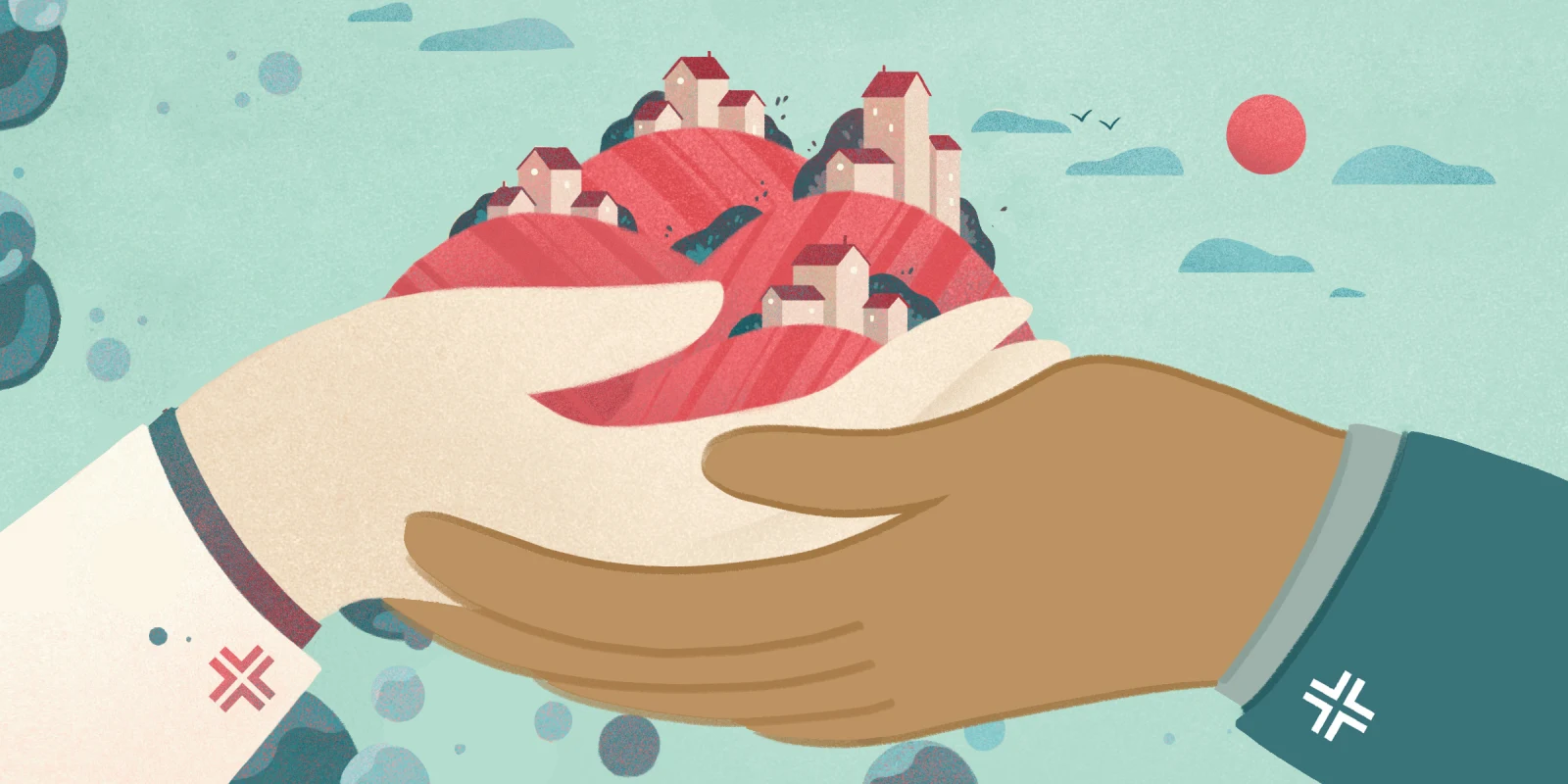I was sitting in a stiff wooden dorm chair, watching my peers clip away at colored 8 x 12 sheets from across the table. In fat Crayola markers, we scribbled iterations of “Happy Thanksgiving” and traced our hands to vaguely resemble turkeys. We were making cards for children at a local hospital to help them celebrate the holidays. Although the intention sounded kind on paper, I remember thinking how silly this felt ... even though I was the one leading the volunteer event. I imagined myself receiving these neutral cards from complete strangers. In my mind, I tossed them aside, as one discards spam mail without a second thought. At the time, I thought perhaps I was being too pessimistic and brushed my exasperation aside.
However, I couldn’t quite shake that feeling, as I had felt similar frustration before. In high school, a classmate had gone to Ecuador on a service trip. During their visit, they had helped to build a gazebo for a local elementary school. This work was applauded by my school and teachers, and I know their intentions were good.
Still, a thought crossed my mind: Who does it really help for a high school student with no construction experience to spend hundreds of dollars to fly across the globe to build this ornamental structure? If the goal was purely to help the community, they should have sent the money directly to local workers, rather than use up funds on travel and lodging. At the end of the day, it seemed like the volunteers gained the satisfaction of helping others, but the community received minimal actual benefit.
Throughout the rest of college, I tried to strike a balance between service that feels personally rewarding and what actually helps the community. I received a grant to deliver medical equipment to an underserved clinic in Indonesia, which we made certain had explicitly requested these supplies. My partner and I were supposed to travel there in the summer to deliver our donation. However, the COVID-19 pandemic forced us to modify our initial plan, and we ended up shipping the supplies directly to the clinic. Although I wish it had been under better circumstances, we were able to have a greater impact on the clinic and its patients when we did not travel. With the unused travel funds, we actually sent double the amount of medical equipment than we had originally budgeted for.
This September at the Women in Medicine Summit (WIMS) in Chicago, being surrounded by national leaders in health care, gender equity, and diversity led me to further question my own impact. Numerous presenters, including Brad Johnson, PhD, Stella Safo, MD, MPH, David Smith, PhD, Karen Catlin, ScB, Avital O’Glasser, MD, FACP, SFHM, and Mark Shapiro, MD, discussed gender allyship in their talks, causing me to consider what makes a good ally.
With allyship, there is often the underlying question: Is this performative? Where does one draw the line between a performative ally and a real ally who also feels good about supporting a cause? A performative ally will support other groups only to the extent that it makes themself feel good or helps themself gain social capital. A real ally can still feel good about the work that they are doing, but they will not abandon a social cause the moment that they face resistance or if their opinion is not popular.
All these experiences have led me to question what it means to be truly selfless or altruistic. By definition, altruistic behavior is driven by a conscious desire to help another solely for that other person’s sake, while selfish behavior is driven only by a desire to help oneself. There are numerous theories that seek to explain whether or not altruism is inherently admirable, if all human behavior is selfish, and if there is a true benefit to altruistic behavior.
Psychological egoism is the theory that all human behavior is fundamentally driven by self-interest. This doctrine states that when we do help others, it is ultimately done as a means to our own good. Weak egoism holds that our actions are driven at least in part by self-benefit. A weak egoist could explain that “feel-good” service is so popular because our brains are wired to reward us with pleasurable neurotransmitters such as serotonin for prosocial actions. Currently, the philosophical and scientific debate surrounding this issue is unresolved, and empirical evidence is mixed.
Whether or not one believes that any human action can be altruistic, we would all likely agree that selfish behavior certainly exists. Incentives can clearly drive human behavior, but feeling good about volunteering is not necessarily a problem. If both parties are mutually benefiting, then I do not find fault with this lack of “pure” selflessness itself. However, problems do arise when one’s intended impact does not match the actual impact on the community, regardless of whether or not there were good intentions.
To address this issue, both organizational and individual changes should be made. Volunteer groups should avoid exaggerating or otherwise misrepresenting their impact. They should also participate in clear and ongoing communication with the communities they serve to ensure their needs are properly identified and met. Meanwhile, volunteers should use discretion when deciding which organizations to join. Individuals should also reflect on if their work is having the intended impact and if it is being done for reasons beyond oneself, at least to some degree.
Ultimately, I believe that community service does not have to be purely selfless, but it must be at least mutually beneficial. We should not approach service by asking what we can do to help, rather we should start by considering what our communities need. If we feel good while helping others, that should be a nice perk rather than the driving force behind our actions.
How would you make public service more selfless? Share in the comments.
Jasmine Haraburda is currently an MS2 at the University of Cincinnati College of Medicine in Cincinnati, Ohio, and is originally from Columbus, Ohio. Outside of medicine, she is interested in environmentalism, statistics, philosophy, and public health.
Image by Sonia Ligorio / Getty







